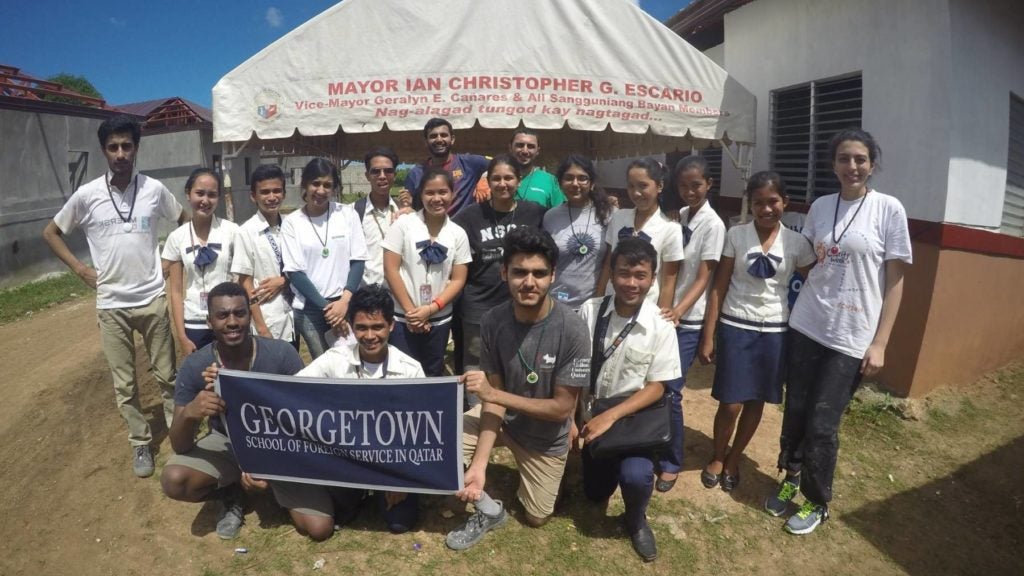Georgetown Students Explore the Complexities of Disaster Management in the Philippines Through the Community Engagement Program

Nine Georgetown University in Qatar (GU-Q) students recently returned from a school trip to the Philippines as part of their Community Engagement Program, an immersive hands-on educational experience, where they learned first-hand about the complexities of disaster management following the deadliest storm of that nation’s history.
Each year, GU-Q’s Community Engagement Program (CEP) focuses on a specific global issue and designs a pre-trip curriculum through which students can voluntarily enroll and participate to explore that issue. This year, with the theme of Disaster Management, the students looked at the case study of Typhoon Haiyan, or Yolanda, which hit the Philippines in November 2013. According to government figures, Typhoon Haiyan affected over 14 million people across 46 provinces when it hit the Philippines. Five million people saw their homes severely damaged or destroyed, and thousands were killed. Through CEP, the GU-Q students were able to learn about how the government and civil society continue to address the long lasting impact of such a large-scale disaster.
“CEP is representative of the kind of holistic education we offer our students, where social justice goes hand in hand with learning about the way the world works. Our main philosophy in CEP is to give students the opportunity to learn about a major global issue through the lens of social justice, while developing self-awareness and leadership skills. We aim for them to take their CEP experience and apply it towards creating social change in their own communities and around the world,” said Rebecca Barr, Student Development Officer.
Prior to the trip, the students completed the Qatar Red Crescent certificate program in Disaster Management. Once on the ground in the Philippines, they spent the first part of their trip meeting with various stakeholders, including political, social, humanitarian, and economic leaders in Cebu, one of the major logistics hubs during the aftermath of the deadly storm.
For the second part of their trip, the students got their hands dirty, working alongside local homeowners to build houses affected by the disaster through Habitat for Humanity. For trip participant Deena Newaz, a GU-Q senior majoring in Culture and Politics, this was the most memorable part of the experience.
“When we actually worked on the Habitat for Humanity site in Bantayan Island, I was completely pushed out of my comfort zone through the manual work we were doing,” she said. “Because we were such a close knit group, the shoveling and drilling in the heat was enjoyable as we motivated each other and made sure everyone was taking breaks. By the end of our trip, we were all filled with joy as we had something tangible to measure our efforts.” The students successfully completed the flooring for 5 homes that will be occupied by families who were displaced by the typhoon.
Deena is also pursuing an honors thesis that looks at post-conflict reconciliation and deals with issues of government and NGO interventions. “CEP allows you to apply the theories studied in class and encounter the devastating realities on the ground. The image of a disaster simply observed through news stories or books is often distorted. When we were on the ground we realized that although the typhoon was devastating, people also harbor so much hope for the future. The resilience of people and the way they mobilized aid was remarkable. I wouldn’t have come across that in a class discussion.”
Past areas of CEP focus have included International Migration, Education & Development, and Economic Development. CEP students have visited countries including India, Jordan, Sri Lanka, Tanzania, China, South Africa, Ethiopia, Bangladesh and the USA.